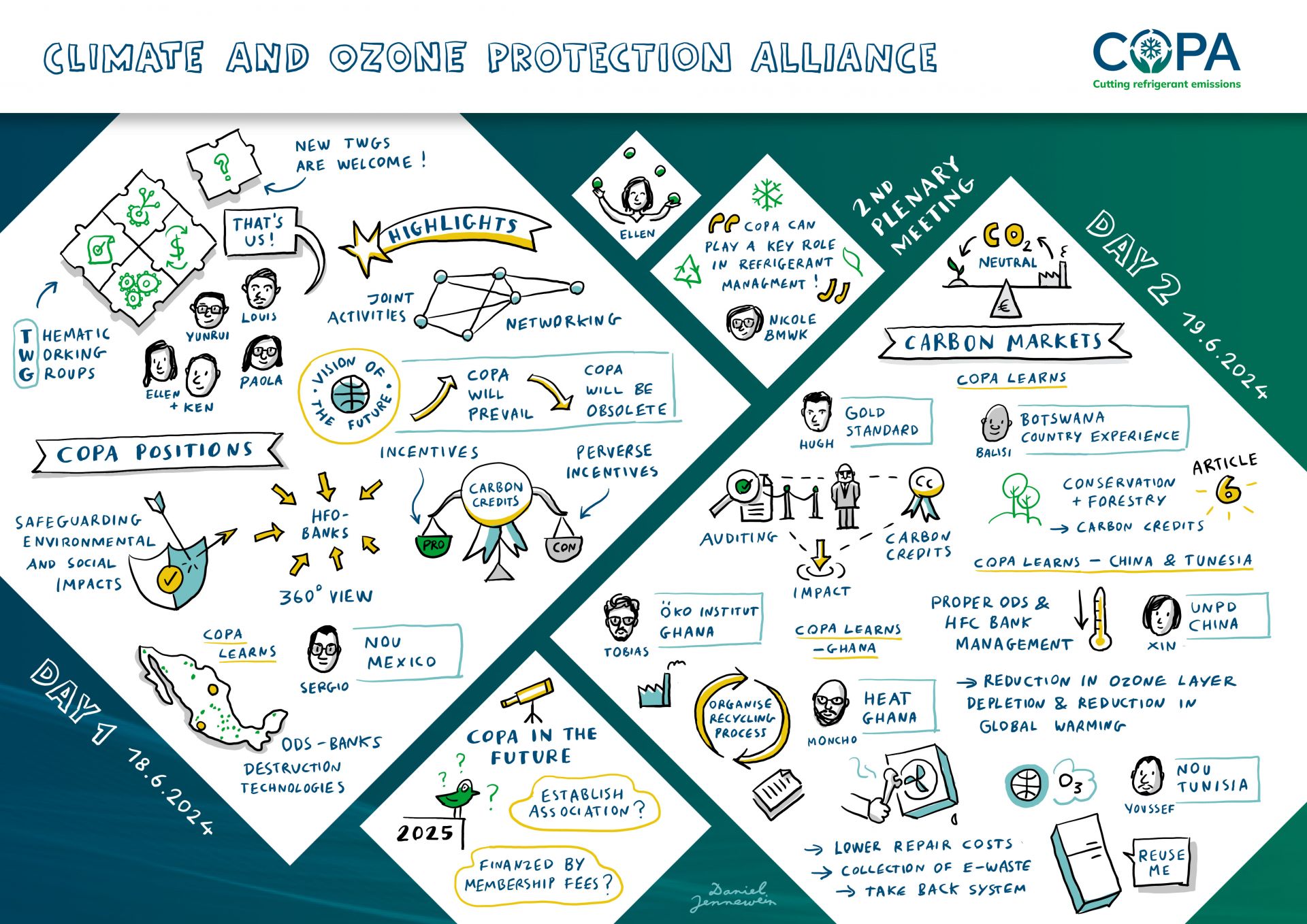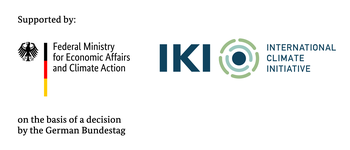
Energetic work towards Ozone Protection – Highlights of the second COPA Plenary
“Since its establishment in 2021, COPA has blossomed into a global alliance, uniting members from every corner of the globe and stakeholders representing a wide array of sectors including public and private entities, civil society, academia, and finance.” - Nicole Wilke, Federal Ministry for Economic Affairs and Climate Action of Germany
51 participants, 16 speakers from around the globe and countless insightful discussions – COPA’s second Plenary Meeting on 18-19 June 2024 was again a great success for all participants! A packed agenda covered two half-days of presentations, including several parallel sessions, with topics ranging from policy, finance, and technology cases, along with updates from COPA Steering Committee, the Secretariat and future outlook at the sustainability opportunities for COPA.
The welcome remarks from Rachel Pekker from the Federal Ministry for Economic Affairs and Climate Action (BMWK) opened the first day which already set a clear aim for the two days. The common work of the COPA alliance together with the BMWK is of high importance for the protection of the climate and the ozone layer. Within the last two successful years, a lot of events, tours and learnings took place – a summary of these highlights can be found in this video. Within the different sessions, all the COPA members could share their own highlights of the last months and years which again proved the relevance of the topics.
The two half-days were filled with many different thematic sessions and learning sessions which all provided experiences, good examples or deep-dive learning. COPA’s work is divided into four Thematic Working Groups which all deal with different topics and of course, it was part of the plenary to learn about the current status quo of their work; “Technology solutions for ODS and HFC recovery, reclamation and destruction”, “Financing mechanism for GHG mitigation measures in the ODS and HFC banks sector”, “Implementation models for ODS and HFC end-of-life management” and “Policy framework for effective ODS and HFC banks management”. The exchange was very valuable for the other participants as it allowed them to have deeper insights into the work of the other groups.
On both days the three position papers on “COPA Safeguards”, “COPA Position on HFO” and “COPA Position on Carbon Credits as financing source for management on ODS/ HFC bank management activities” were presented and discussed in detail. The position papers were written and presented by the Steering Committee and afterwards 2 of 3 papers were approved by the Plenary – cementing COPA as a member driven alliance.
As already stated above, part of the plenary was implemented as parallel sessions so that the participants could choose the event, they want to engage in. One vital part was the networking session, a declared aim of the plenary. COPA has grown rapidly during the last two years and now has 70 members, making the exchange between members both fruitful and fun. The discussions in the parallel sessions were lively and allowed the members to connect over the shared topics.
The first day ended with an insightful learning session on best practices from Mexico. The National Ozone Officer Sergio Merino presented their work which includes more than 120 projects under the frame of the Montreal Protocol. Again, this proved the relevance of the topic and showed how successful the work can be!
The second day was opened by Nicole Wilke, Head of Division International Financing for the Transformation, International Market Mechanisms in the BMWK. She emphasized the success of the alliance work, connecting a wide range of members from around the globe and different sectors.
Topic wise, this second day started with a learning session on Carbon Markets under Article 6 of the Paris Agreement where Hugh Salway from Gold Standard introduced the work around carbon markets. After that, the experiences of Botswana development towards Paris Agreement Article 6 carbon market participation were shared by Balisi Gopolang. After a short break, it was time to learn about Standard Operating Procedures for end-of-life Fridges & Freezers from Tobias Schleicher (Öko Institut), followed by the ODS and HFC Collection options in Ghana from Mr. José Ramón Carbajosa from HEAT.
In parallel, another important session took place, presenting options and challenges about the future of the COPA alliance – the members could share their vision of the future organization of COPA and how the alliance should function.
Before concluding the day, Ms. Xin He shared best practices from ODS bank Management activities from UNDP. Afterwards, the Tunisia Experiences and Lessons Learned in Banks Management were presented by National Ozone Officer Youssef Hammami.
Matching with that, Ellen Michel, head of COPA Secretariat, concluded the event with her wishes for the future of the COPA network.
"The Plenary Meeting takes place once a year, but COPA's work is ongoing. We hope that this day has inspired and motivated you to continue your involvement in the COPA network." Ellen Michel, head of COPA Secretariat.
Click here for the presentations on Day 1
Click here for the presentations on Day 2
